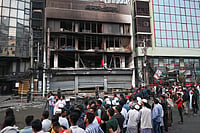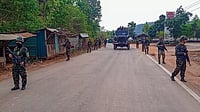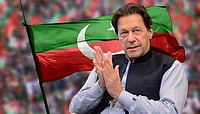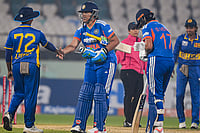Ever since the nuclear tests by India and Pakistan in May 1998, a series of unfortunate events have raised tensions in the region to a dangerously high level. The danger is that it could once again drive both countries towards a catastrophic war. First it was the Kargil conflict, which brought into sharp focus the deep disagreements between the two countries over Kashmir. It also heightened concerns that the unresolved, long-standing antagonism has indeed the potential of becoming a nuclear flashpoint. The premeditated downing of a Pakistan Navy Atlantique aircraft by the Indian forces followed soon after. Then came the internal change in Pakistan, wherein the civilian despotic ruler was replaced by a military regime. This was anathema to India as it thinks the Pakistani army was the architect of the Kargil episode.
The recent hijacking of the Indian Airlines plane by Kashmiri mujahideen was another major setback, which has again set emotions ablaze. India has been engaged in an unrelenting campaign to demonise General Musharraf. Following a policy of denial, it wants to withhold according any legitimacy to his government. In pursuit of this logic it went to the extent of vetoing the saarc heads of state meeting last year, losing an invaluable opportunity to reduce tensions. Indias initiation of the draft nuclear doctrine and George Fernandes assertion of the concept of a "limited conventional war"-implying India is prepared to undertake such a war-has only added fuel to the fire. By playing on the international communitys concerns about Islamic militancy and undemocratic regimes, India is trying to mould American policy in South Asia to suit its security interests. Using all possible resources-media, economic clout, the Indian diaspora-Pakistans neighbour is making all-out efforts to not only block President Clintons visit to Pakistan, but even get it labelled a terrorist state. But the more India shouts about Pakistans support to the mujahideen and builds up a war hysteria, it keeps world attention focused on Kashmir and on the region. The war has extended to the electronic and official media of both countries, which continue to pour venom against each other. Meanwhile, the LoC in Kashmir has become very volatile and serious clashes causing heavy civilian and military casualties on both sides are a daily occurrence. To add to the danger, Indian forces are conducting exercises close to the international border. Pakistan in all likelihood would respond by taking reciprocal measures and the dangerous cycle of brinkmanship will continue.
The greatest challenge, therefore, for the leadership in the two countries, irrespective of their sharp and irreconcilable differences, is to manage the crisis and bring it to a level wherein the process of political dialogue can commence. The first priority should be to take immediate steps to faithfully implement the agreed-upon military Confidence Building Measures (CBMS). The military hotline between the director-generals military operations can be very effective in the present scenario. There already is an extant military CBM relating to military exercises, it needs to be faithfully implemented. Prudence demands that both sides avoid exercises close to the border, particularly when tensions are running high. Armoured formations and aircraft should stay away from the borders during manoeuvres and can preferably be kept in peace locations till tensions ease. Astute observers of the South Asian situation, drawing on experiences from the Cold War, have in the past suggested that India and Pakistan should agree to adopt an "open skies" arrangement. This proposal needs to be carefully studied if the two countries genuinely believe in moving towards strategic stability. When a certain minimum level of confidence is restored, both sides should seriously consider the non-deployment of artillery units on the LoC and areas which have been subjected to frequent and heavy shelling in the past. This measure will also alleviate the sufferings of helpless civilians who are caught in this protracted conflict.
Mutual nuclear restraint is a vital component for stabilising the situation. As a first requirement, nuclear rhetoric should be scrupulously avoided. Deployment of missiles by any side would be very destabilising and dangerous in the current environment and would surely invite reciprocal action. Right now, it may sound over-optimistic, but it would be an excellent idea if both countries jointly agreed to sign the CTBT. In any case, indications are that both countries in principle have agreed to sign the treaty and are only delaying in order to achieve some tactical gains. Nothing would be more rewarding than generating some goodwill for South Asia, more so when the world has expressed deep reservations about our nuclear programmes.
A reversal of the spiralling downward trend is possible only if there is political will on both sides. But our leaders have failed in the past and their mindset remains unchanged. Both countries have to rise above their current policy of scoring short-term tactical gains. Political dialogue needs to be reopened, India should stop repression in Kashmir and Pakistan can reciprocate by reigning in the mujahideen. If Vajpayee feels uncomfortable in meeting Gen Musharraf now, it could be postponed for a while. But surely, the foreign ministers of both countries could meet soon. It will have a positive impact and contribute toward easing tensions. After conditions somewhat stabilise, a meeting of senior military officers could also be considered. Meanwhile, both governments must ease travel restrictions, particularly for journalists and the media to help develop a greater understanding and tolerance of each others viewpoint. South Asia today stands at a crucial time in its history. We need leaders with a new vision and approach. Leaders who can break free from the stranglehold of the past and carve a future where both countries can have a vibrant and prosperous society.


























